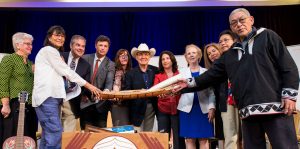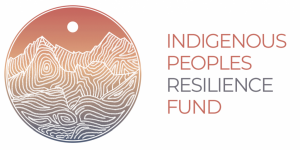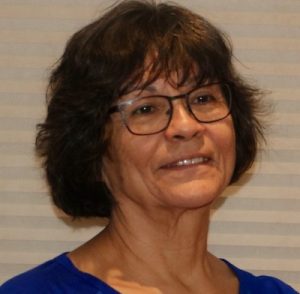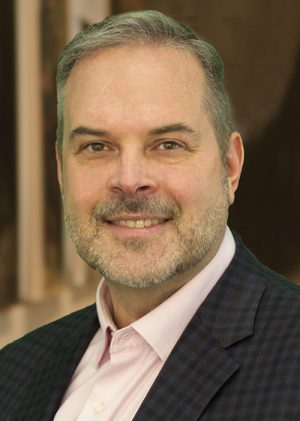By Victoria Grant and Bruce Lawson
The challenge
In many Indigenous worldviews, cultivation is part of the journey of life or, more commonly, the “Medicine Wheel.” Planting a seed today, with proper care and nourishment, can create a forest over time.
In 2015, the Philanthropic Community’s “Declaration of Action” came from seeds nourished through years of work by private, public and community foundations to build relationships with Indigenous leaders, as well as Indigenous-led and Indigenous-serving organizations, to better understand their needs and those of their beneficiaries. One of the earliest efforts dates back 13 years to the launch of the Aboriginal Grantmakers Network, which helped to lay the groundwork for The Circle on Philanthropy and Aboriginal Peoples in Canada.
The Declaration was born from a challenge laid down by Justice Murray Sinclair, Chair of the Truth and Reconciliation Commission (TRC). At a Philanthropic Foundations Canada (PFC) conference in 2014, he challenged the philanthropic community to act in a meaningful way. By then, there was a receptive audience.

The original team members who prepared the Philanthropic Community’s “Declaration of Action” in June 2015.
The two of us were part of the group that responded by drafting the Declaration. It came together through a collaborative process by a small group in the weeks leading up to the Closing Event of the TRC in June 2015. While it was an intense process both to write the Declaration and enlist organizations to sign it, the real work of the signatories lay ahead. How would we meaningfully integrate the Declaration into our work? How could we breathe life into it, so it didn’t end up on a shelf like many Treaties and commissions of the past?
By the time the Declaration was presented at the Closing Event, more than 30 foundations and networks had signed, signaling their desire to sustain the work of the TRC and the desire to implement the Declaration’s principles into their own work. Since then, the number has grown substantially.
What’s transpired since June 2015?
We can speak only from our personal experiences, and out of them, offer anecdotal evidence that the Declaration has made a meaningful contribution in the philanthropic field:
- Network organizations, such as the PFC, Community Foundations of Canada (CFC) and Environment Funders Canada (EFC), have regularly featured Indigenous speakers and topics within their educational programs.
- There’s greater awareness of the history of colonization and more opportunities for education through professional development programs like Partners in Reciprocity offered by The Circle or the Blanket Exercise offered by Kairos.
- Several private and community foundations have developed Indigenous-led advisory bodies to guide their work and designated funding streams for Indigenous-led organizations and beneficiaries.
- Several private and community foundations, as well as network organizations (PFC, CFC and EFC) have hired Indigenous staff and/or recruited Indigenous leaders to their Boards.
 One the most tangible ways in which the Declaration has manifested itself is the Indigenous Peoples Resilience Fund (the Fund). It came together in a matter of weeks, in response to the Covid-19 pandemic. The ability to recruit an Advisory Council comprised of First Nations, Metis and Inuit philanthropic knowledge-holders, as well as an Indigenous group of staff, is a sure sign of progress in the philanthropic community.
One the most tangible ways in which the Declaration has manifested itself is the Indigenous Peoples Resilience Fund (the Fund). It came together in a matter of weeks, in response to the Covid-19 pandemic. The ability to recruit an Advisory Council comprised of First Nations, Metis and Inuit philanthropic knowledge-holders, as well as an Indigenous group of staff, is a sure sign of progress in the philanthropic community.
The Fund was launched in June 2020 with initial funding of $1.4 million for distribution to First Nations, Metis and Inuit communities and organizations. By the end of 2020, it had multi-year commitments of over $12 million and had already distributed $2.2 million. The rapid response of the philanthropic community to the unfolding crisis in Indigenous communities wouldn’t have happened without many years of building relationships, educating the philanthropic community about the needs of Indigenous self-determination, and wouldn’t have happened without the commitments made through the Declaration.
There are many more seeds that need to be planted and roots that need to be nourished; indeed, we need not only a forest, but an entire ecosystem to support the self-determination of Indigenous Peoples in Canada.
We invite others to join us on this journey.
The authors
 Victoria Grant: “I grew up in a small community in northern Ontario that was isolated on an island in the middle of a lake that had a large, non-resident, tourist population, with the nearest community 20 miles away. I would describe myself as someone who is a community builder. Volunteerism was a big part of my life. In the 1970s, my community was engaged in a land claim, and we issued a caution on 4,000 square miles of land in northern Ontario that we consider our traditional territory. This caused some hardship and hard feelings among the local, year-round residents, the Teme-Augama Anishnabai (Deepwater People), and the seasonal residents. In my case, I sort of feel that I’ve spent most of my life trying to make sense of our differences and our common goals. The question for me then and now, from a local perspective to a national perspective, was and is: how could we come together with our different interests, share the land, and support each other in a good way, so that all of us feel at home in this place that we all loved and lived?”
Victoria Grant: “I grew up in a small community in northern Ontario that was isolated on an island in the middle of a lake that had a large, non-resident, tourist population, with the nearest community 20 miles away. I would describe myself as someone who is a community builder. Volunteerism was a big part of my life. In the 1970s, my community was engaged in a land claim, and we issued a caution on 4,000 square miles of land in northern Ontario that we consider our traditional territory. This caused some hardship and hard feelings among the local, year-round residents, the Teme-Augama Anishnabai (Deepwater People), and the seasonal residents. In my case, I sort of feel that I’ve spent most of my life trying to make sense of our differences and our common goals. The question for me then and now, from a local perspective to a national perspective, was and is: how could we come together with our different interests, share the land, and support each other in a good way, so that all of us feel at home in this place that we all loved and lived?”
Victoria Grant, Maang Indoden, (Loon Clan), Teme-Augama Anishnabai Qway (Woman of the Deep-Water People) and member of the Temagami First Nation. Victoria is a past Chair of The Circle on Philanthropy and Aboriginal Peoples, and is currently involved with the Indigenous Peoples Resilience Fund. She’s a keen volunteer, and passionate in advocating for a more robust Indigenous voice within the foundation and philanthropic world.
 Bruce Lawson: “Relationships take time to develop, and there have been markers over time. As examples, The Counselling Foundation of Canada made its first grant to benefit Indigenous learners at Lakehead University in 1987 and made a series of further grants to Indigenous-led and Indigenous-benefitting organizations in the subsequent years; but it wasn’t until 2010 that the Foundation formally articulated the career development of Indigenous Peoples a stated priority in our work, including a dedicated funding envelope and education for Board and staff members.”
Bruce Lawson: “Relationships take time to develop, and there have been markers over time. As examples, The Counselling Foundation of Canada made its first grant to benefit Indigenous learners at Lakehead University in 1987 and made a series of further grants to Indigenous-led and Indigenous-benefitting organizations in the subsequent years; but it wasn’t until 2010 that the Foundation formally articulated the career development of Indigenous Peoples a stated priority in our work, including a dedicated funding envelope and education for Board and staff members.”
Bruce Lawson is President of The Counselling Foundation of Canada and the Executive Officer of CERIC, a national charity that advances career development in Canada. He’s a founder of Foundation House, a collaborative workspace housing several foundations, charitable and nonprofit network organizations in Toronto; was part of the steering committee that co-authored the Philanthropic Community’s “Declaration of Action”; was a member of the Advisory Committee on the Charitable Sector for the Government of Canada; and helped to launch the Indigenous Peoples Resilience Fund.
Monday, December 20, 2021 in For homepage, Indigenous series, Social Justice & Change
Share: Twitter, Facebook



